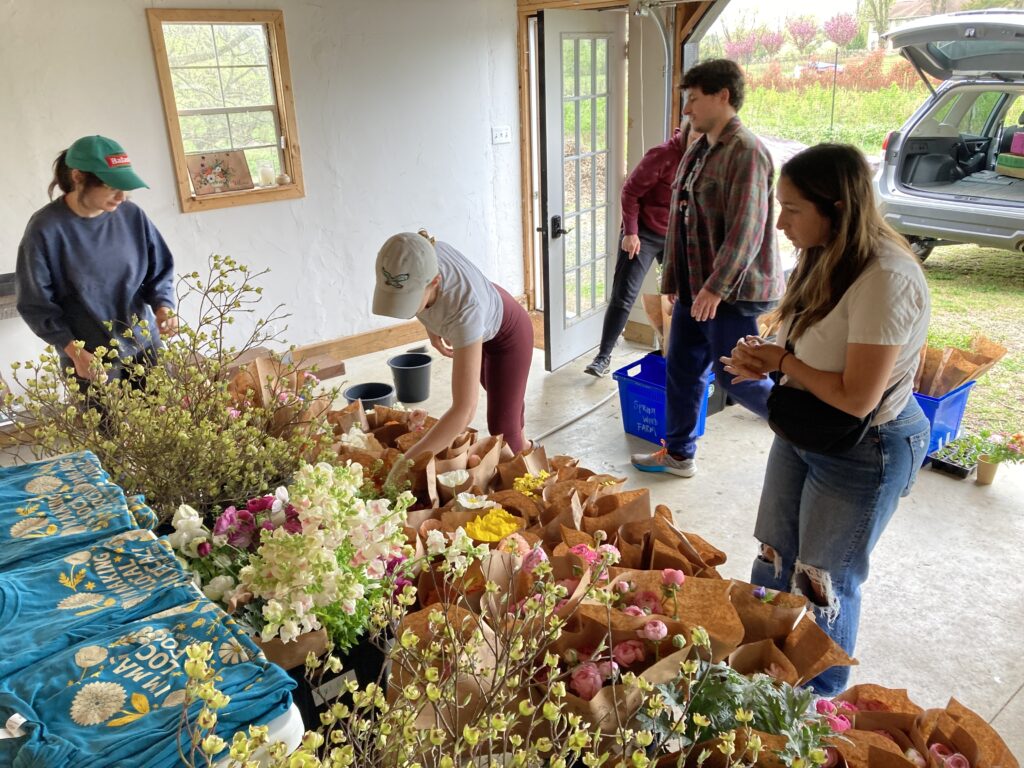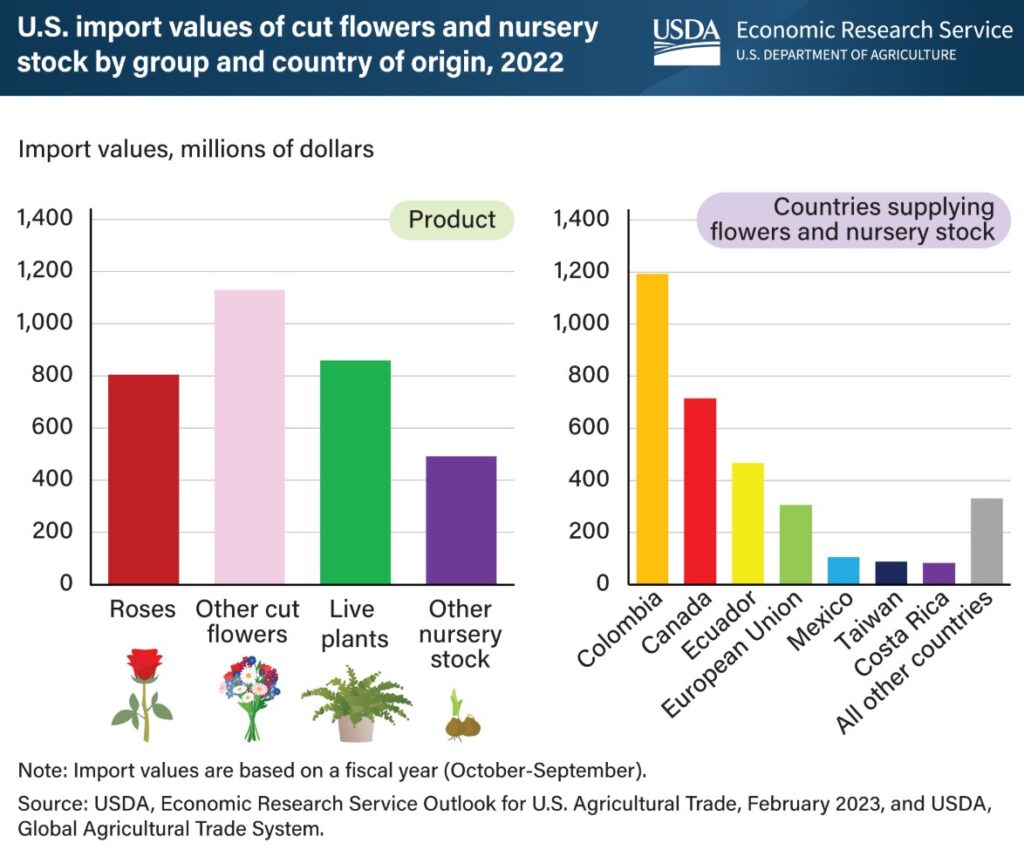A few weeks ago the floral industry was aflutter with news that a 25% tariff would be imposed on Columbian-grown roses right before Valentine’s Day. Since 2012 there have been zero tariffs on goods (including flowers) coming into the US from Columbia. So a 25% tariff would be shocking to the supply chain. Fortunately the threat of tariffs was rescinded and the crisis was averted, at least temporarily.
But did you know that according to the USDA, Canada is the second largest supplier of our imported flowers and potted plants? Mexico is the fifth. We’re not out of the woods yet. If tariffs increase on floral imports, florists will see higher wholesale prices and possible shifts in consumer demand as floral retail prices skew upwards.
Additionally, tariffs can affect supplies of hard goods, such as floral foam, containers, and packaging materials, many of which are sourced from China and other countries. These increased costs add up, impacting overall profitability.
For our local farms, tariffs will also impact supply costs. One example on the farm side is potting soil used for seed starting. One of the biggest suppliers, ProMix, is based in Canada.
Increased supply costs for farmers may also drive up the cost per stem when it reaches you.

Ways Florists Can Prepare
While tariffs are largely out of a florist’s control, there are proactive steps businesses can take to mitigate their impact:
- Diversify Your Supply Chain – Establish relationships with multiple suppliers, including domestic flower farms. This can provide more opportunities to shop around if prices rise due to import tariffs. Strengthen your relationships with your vendors so you’ll be able to have a personal conversation about win-win solutions in the future.
- Emphasize Locally Grown Flowers – Sourcing more blooms from local farms not only helps reduce tariff-related costs but also appeals to customers interested in supporting local businesses and sustainability.
- Adjust Pricing Strategies – You may wish to consider slight price adjustments staggered over the next few months in anticipation of tariffs impacting the supply chain. Incremental price increases over time will not be as much of a shock to customers as a large one suddenly.
- Review Your Event Contract: If you don’t already have a contract clause that states estimates change based on market prices, or that you will substitute similar items based on price or availability, be sure to add one. If the price of proposed products increases significantly before the event date, ask customers how they’d like to proceed. Some may be willing to pay more for their preferences, while others will choose to scale back.
- Optimize Floral Design Choices – Focus your resources and marketing on designs that incorporate more locally available flowers and hardy, long-lasting blooms with less shrink.
- Push Up Purchases – If you know you definitely need a case of hard goods, a computer/POS upgrade, or a new delivery van, you may want to make the purchase sooner than later.
- Stay Informed and Advocate – Keep up with trade policies that could impact your business and participate in industry groups that advocate for the floral sector. Call or email you local, state and federal representatives so they know if and when your business is being impacted.
- Market Happiness – By times, an economic downturn and rising prices can really slow down flower sales since they are a “luxury” purchase. But as customers feel more stress and anxiety in their lives, they’ll be looking for affordable doses of happiness. Rather selling flowers, start marketing joy and a sense of centeredness when in the presence of blooms. Remember how everyone flocked to flowers during the pandemic? Tap into the same strategies you may have used then.
Looking Ahead
While tariffs and trade policies fluctuate and there’s seemingly no concrete or predictable policy in place for the months ahead, florists who stay adaptable and proactive will be best positioned to navigate potential price shifts. By focusing on supply chain flexibility, locally-grown blooms, consumer education, and advocacy, florists will still be able produce beautiful arrangements while safeguarding their bottom line.

